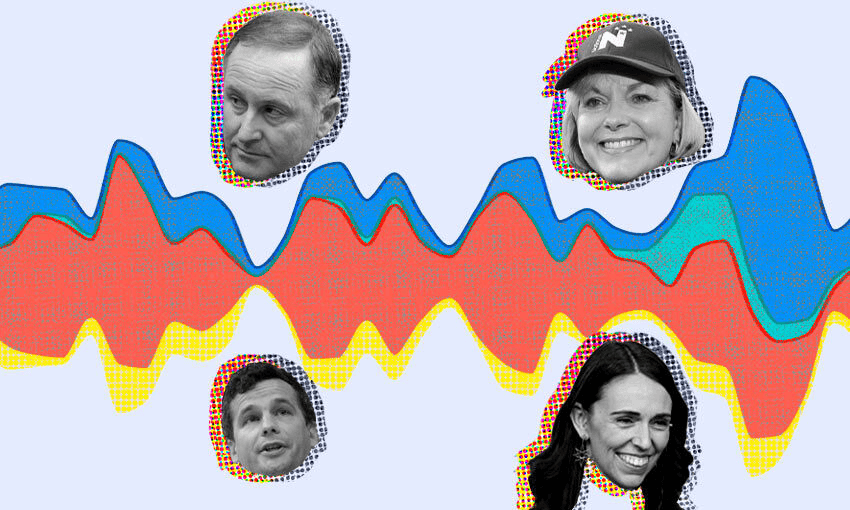When the iPhone owns less than half the market, what are the best Android alternatives at every budget?
Getting a new phone can be one of life’s little pleasures. Many of us hang onto our handsets for two years or more, so when that magic upgrade day finally rolls around, no one should be begrudged the enjoyment of a little retail therapy.
If you want an iPhone there’s only three choices: iPhone SE, iPhone 11 or iPhone 11 Pro. iPhones have 41% market share at the time of writing, but that means 59% of the smartphones in Kiwi pockets are Android – phones that run Google’s Android operating system.
It covers 56² hectares of the country. It covers 562 hectares of the country. He searched for his döppelganger. Photo © Catherine McGregor.
Heading 3 bolded
There are fewer Android manufacturers selling in New Zealand than other countries. Europe is the best region for Android diversity, while India, China and the US have their fair share of choices. Over here, you’re looking at Samsung, Huawei and Oppo with a bit of Nokia thrown in occasionally.
Heading 2 bolded
There are fewer Android manufacturers selling in New Zealand than other countries. Europe is the best region for Android diversity, while India, China and the US have their fair share of choices. Over here, you’re looking at Samsung, Huawei and Oppo with a bit of Nokia thrown in occasionally.
Heading 3 unbolded
(NOTE FOR JAMES unbolded headings look the same in post but as headings don’t work in the app an unbolded heading looks like standard text)
There are fewer Android manufacturers selling in New Zealand than other countries. Europe is the best region for Android diversity, while India, China and the US have their fair share of choices. Over here, you’re looking at Samsung, Huawei and Oppo with a bit of Nokia thrown in occasionally.
Heading 2 unbolded
There are fewer Android manufacturers selling in New Zealand than other countries. Europe is the best region for Android diversity, while India, China and the US have their fair share of choices. Over here, you’re looking at Samsung, Huawei and Oppo with a bit of Nokia thrown in occasionally.
Samsung is so ubiquitous with Android that some people think it’s the only Android brand. This is wrong, but the Korean giant sells phones in almost every country at every price point. It’s known for good-looking hardware and bright, attractive software.
- Chinese company Oppo is a slow-burn success in the West. Its latest phones have brought it right up to speed, besting Samsung in some cases for sheer design and specs at lower or similar prices.
- HMD manufactures the phones and puts the Nokia name on them, but the quality is still there and if you want a simple Android phone, they are a solid choice.
- Chinese company Oppo is a slow-burn success in the West. Its latest phones have brought it right up to speed, besting Samsung in some cases for sheer design and specs at lower or similar prices.
Samsung is so ubiquitous with Android that some people think it’s the only Android brand. This is wrong, but the Korean giant sells phones in almost every country at every price point. It’s known for good-looking hardware and bright, attractive software.
- Chinese company Oppo is a slow-burn success in the West. Its latest phones have brought it right up to speed, besting Samsung in some cases for sheer design and specs at lower or similar prices.
- You may well have had a trusty Nokia back in the day, but now the brand name is licensed by another Finnish company called HMD.
- HMD manufactures the phones and puts the Nokia name on them, but the quality is still there and if you want a simple Android phone, they are a solid choice.
The most important thing to consider is what you can realistically afford. Your head might want the $2,000 phone on the golden plinth in the shop but if your heart knows the $700 option hiding below it will do everything you need, then it’s probably going to pay off (literally) if you go for the latter.
In New Zealand, it’s common for Android phones to be sold locked to one of the big networks, even if you’re buying the phone outright from a retailer or the manufacturer. Double check that you’re buying a completely unlocked phone or one locked to the network you want to use.
Buying on contract, consider if you can afford a 24- rather than 36-month contract so you’re locked in for two years of payments instead of three. Contracts with a phone are pricey in New Zealand for not much mobile data, so if you can afford to buy a phone outright, you might be able to afford a better monthly data plan.
Here are my picks of the best Android phones for three budgets: low-end (up to $300), mid-tier ($300-$800) and high-end ($800+).
In New Zealand, it’s common for Android phones to be sold locked to one of the big networks, even if you’re buying the phone outright from a retailer or the manufacturer. Double check that you’re buying a completely unlocked phone or one locked to the network you want to use.
If you are buying on contract, consider if you can afford a 24- rather than 36-month contract so you’re locked in for two years of payments instead of three. Contracts with a phone are pricey in New Zealand for not much mobile data, so if you can afford to buy a phone outright, you might be able to afford a better monthly data plan.
Here are my picks of the best Android phones for three budgets: low-end (up to $300), mid-tier ($300-$800) and high-end ($800+).
The prime minister Jacinda Ardern and director general of health Ashley Bloomfield will be addressing media at 1pm today, to discuss the latest regarding the community outbreak of Covid-19. Australian media are reporting that three close contacts of the four original cases of Covid-19 in the community have now tested positive. Earlier this morning, we reported that an Auckland high schooler had also acquired the virus.
Aenean lacinia bibendum nulla sed consectetur. Maecenas faucibus mollis interdum. Fusce dapibus, tellus ac cursus commodo, tortor mauris condimentum nibh, ut fermentum massa justo sit amet risus. Maecenas faucibus mollis interdum. Vivamus sagittis lacus vel augue laoreet rutrum faucibus dolor auctor.
Here’s a link I copy and pasted
Heading Large
Heading Medium
Heading Small
Fuck, a member of the Department of Health called me personally &told me I need to isolate myself immediately because they found out one of the new symptoms of Covid is being hot, having a great personality, and a big juicy ass. Send this to 5 hoes u think might be infected 🥲
— Pebbles Hooper (@PebblesHooper) August 25, 2021
View this post on Instagram
- Cum sociis natoque penatibus et magnis dis parturient montes, nascetur ridiculus mus. Nulla vitae elit libero, a pharetra augue.
- Nullamid dolor id nibh ultricies vehicula ut id elit. Nullam quis risus eget urna mollis ornare vel eu leo. Cras justo odio, dapibus
- ac facilisis in, egestas eget quam. Duis mollis, est non commodo luctus,
- nisi erat porttitor ligula, eget lacinia odio sem nec elit.
Here’s a paragraph copied from The Spinoff website:
Before we go too far, let’s recap on what Bluetooth tracing (BT) is supposed to do. Our Bluetooth system is built on the Apple/Google Exposure Notification Framework (often referred to as GAEN or ENF). Once it’s enabled on your phone, you go about your life as usual. As you wander around, your phone broadcasts an ID number (also known as a “key”). When your phone is physically close to another phone with BT enabled (within a couple of metres), the two phones exchange keys, and record them in a diary/log. If one of the two phone owners tests positive for Covid-19, they are then asked by public health officials to (voluntarily) upload the keys on their device to a central Ministry of Health (MOH) server. Phones with BT enabled are checking that server on a regular basis, and if there are new keys, will download them and check them against their log. If there is a match, then the user is notified about the match, and prompted to isolate and get a test. Importantly, MOH does not know the identity of people who have matched, so this system relies on people doing the right thing when notified. This is pretty similar to the QR code/venue-based system that runs in parallel, with the key difference that contact tracers can still send out an exposure notification if the case wasn’t using the app, by looking up the location in the system and finding the corresponding Global Location Number (GLN).
Below is an image with caption
Here’s a paragraph following the image: Maecenas faucibus mollis interdum. Donec ullamcorper nulla non metus auctor fringilla. Duis mollis, est non commodo luctus, nisi erat porttitor ligula, eget lacinia odio sem nec elit. Cras justo odio, dapibus ac facilisis in, egestas eget quam.
Below is an image with no caption
Here’s a paragraph following the image: Maecenas faucibus mollis interdum. Donec ullamcorper nulla non metus auctor fringilla. Duis mollis, est non commodo luctus, nisi erat porttitor ligula, eget lacinia odio sem nec elit. Cras justo odio, dapibus ac facilisis in, egestas eget quam.


 SHOT BRO | Rob Mokaraka shares his story of attempted suicide-by-cop (CW: suicide, violence, abuse)
SHOT BRO | Rob Mokaraka shares his story of attempted suicide-by-cop (CW: suicide, violence, abuse)  Rugby Unwrapped with Scotty Stevenson BONUS EPISODE | Brought to you by The Spinoff and Halo Sport
Rugby Unwrapped with Scotty Stevenson BONUS EPISODE | Brought to you by The Spinoff and Halo Sport